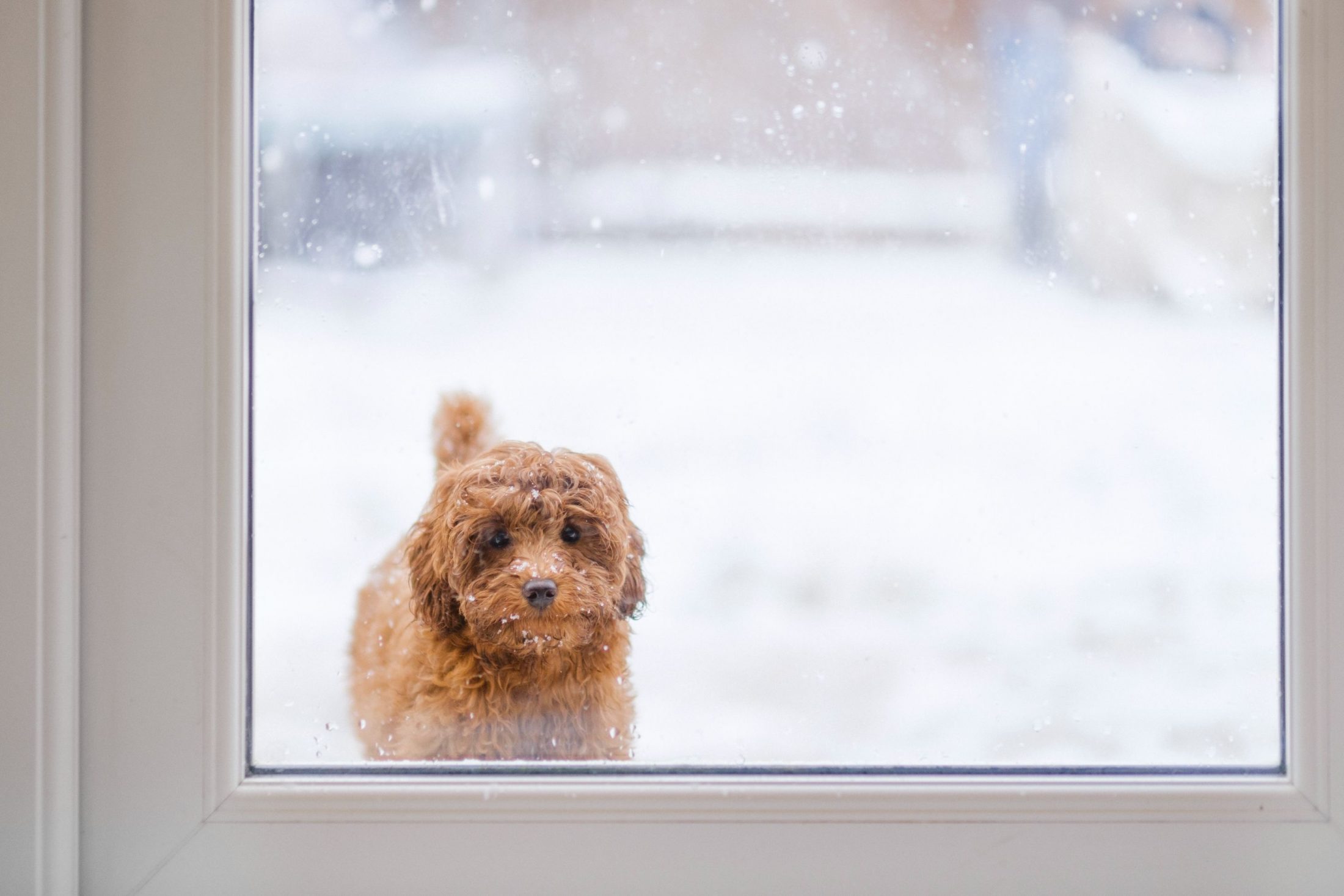
Winter is here, and with it comes the cold and snow. While we can’t change the weather, we can ensure our pets are safe, warm, and comfortable.
Here are some tips to keep your furry friend safe and warm when the weather turns cold.
Don’t Leave Your Pet Outside for Long Periods
Dogs and cats love to play in the snow. Unfortunately, they also tend to overdo it.
On days when it’s too cold (typically about 20 degrees) or icy for pets to be outside, you should bring them indoors. The longer a dog or cat is exposed to cold temperatures, the higher their risk of developing hypothermia or frostbite.
Once indoors, limit the duration of your pet’s trips outdoors based on weather conditions. If it’s too cold for you to stay outside for more than a few minutes at a time, the same is true for your pet.
If your pet is bored by too much time indoors, or to provide healthy exercise during inclement weather, try some fun indoor activities.
Keep Cats Indoors
No matter the season, cats are safest when kept indoors—free from predators, the possibility of being hit by cars, and other hazards. But winter is particularly dangerous for cats.
Since cats are susceptible to hypothermia and frostbite, keeping them indoors during the winter is important. This is especially true when the temperature drops below freezing or in snowy or icy conditions.
Clear Snow and Ice from Your Pet’s Coat and Paws
When your dog or cat walks through slush or snow, their coat and paws become wet or even coated in ice. This can be painful, cause damage to the skin and paw pads, or even lead to hypothermia.
To help prevent these problems, dry your pet’s coat with a towel when they come in from outdoors and clear any snow and ice from their paws.
Outfit Your Pet for the Cold
One way to keep your pet warm during the winter is by outfitting them in cold weather gear appropriate for your climate.
- Sweaters can keep your pet warm when temperatures drop. They’re available in various weights and materials, so consider whether your pet will wear the sweater for extra coziness indoors or as protection against the elements outside.
- Coats offer protection against outdoor winter conditions. Some are water repellent with hoods that cover your pet’s head and ears.
- Boots offer protection from icy terrain and keep paws warm when exposed to cold temperatures.
Know the Signs of Frostbite and Hypothermia
Frostbite is a type of tissue injury caused by freezing. It usually affects the extremities—toes, ears, and tails—but it can also impact internal organs like the heart or lungs with extended exposure. Frostbite usually involves skin damage and sometimes nerve damage as well.
Signs of frostbite in pets include:
- Pale or blue skin.
- Inability to move toes or ear flaps.
- Severe pain when touched.
Hypothermia occurs when the core body temperature drops below normal levels and often results from prolonged exposure to low temperatures or overexertion in cold weather.
The following signs may indicate hypothermia:
- Shivering.
- Cold, pale gums (gums should be pink).
- Dry skin that feels cool to the touch.
- Low body temperature (under 97 degrees).
Keep Antifreeze Out of Reach
Antifreeze is highly toxic to pets, causing kidney failure within days if ingested. Unfortunately, antifreeze often looks like water or juice to a curious pet. Just one drop is enough to cause serious health problems in your pet.
Keep antifreeze out of reach from your pets by putting it up high or storing it in containers that can’t be opened by animals (such as plastic bottles). If you notice any spills or leaks around your vehicle, clean them up quickly with soapy water.
If you think your pet may have ingested antifreeze, call us immediately. The ASPCA’s Animal Poison Control Center is always open and available to offer support by calling (888) 426-4435.
Keeping pets safe during the winter involves preparation and prevention. The team at True Care Veterinary Hospital is dedicated to your pet’s health all year long. To learn more about our services or to schedule an appointment, please call (732) 677-2180.

